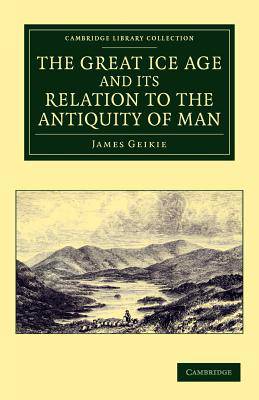
- Afhalen na 1 uur in een winkel met voorraad
- Gratis thuislevering in België vanaf € 30
- Ruim aanbod met 7 miljoen producten
- Afhalen na 1 uur in een winkel met voorraad
- Gratis thuislevering in België vanaf € 30
- Ruim aanbod met 7 miljoen producten
Zoeken
Omschrijving
James Geikie (1839-1915) was born in Edinburgh, and his work from 1861 as a field geologist for the Geological Survey in Scotland provided the evidence for the theories he proposes in this work, first published in 1874 (revised editions appeared in 1877 and 1894). Geikie brought together his own research and the findings of other geologists in Scotland to support his main thesis of 'drift' being evidence of the action not of sea ice but of land ice. He was influenced by James Croll's theory that changes in the Earth's orbit led to epochs of cold climate in one hemisphere and warm in the other, and Geikie believed that the geological record provided evidence for inter-glacial periods. The book was hailed as a breakthrough at the time, and brought the author international recognition. With intricate scientific theories explained in clear uncluttered language, this remains a classic text.
Specificaties
Betrokkenen
- Auteur(s):
- Uitgeverij:
Inhoud
- Aantal bladzijden:
- 646
- Taal:
- Engels
- Reeks:
Eigenschappen
- Productcode (EAN):
- 9781108050081
- Verschijningsdatum:
- 26/04/2012
- Uitvoering:
- Paperback
- Formaat:
- Trade paperback (VS)
- Afmetingen:
- 140 mm x 216 mm
- Gewicht:
- 807 g

Alleen bij Standaard Boekhandel
+ 86 punten op je klantenkaart van Standaard Boekhandel
Beoordelingen
We publiceren alleen reviews die voldoen aan de voorwaarden voor reviews. Bekijk onze voorwaarden voor reviews.











